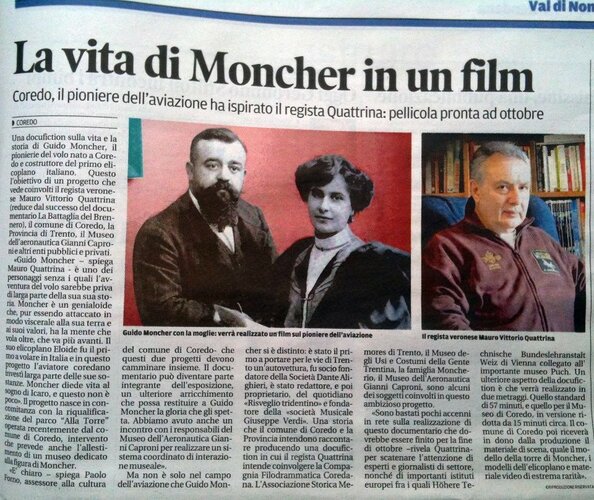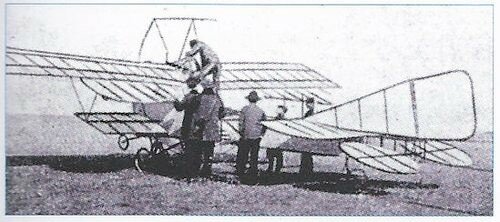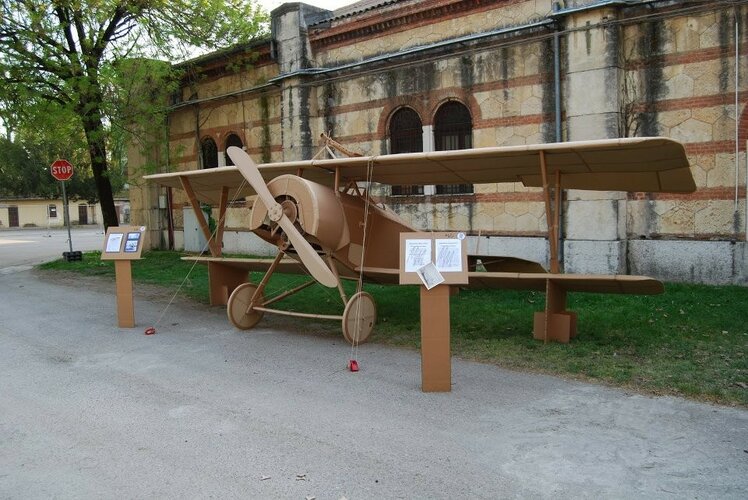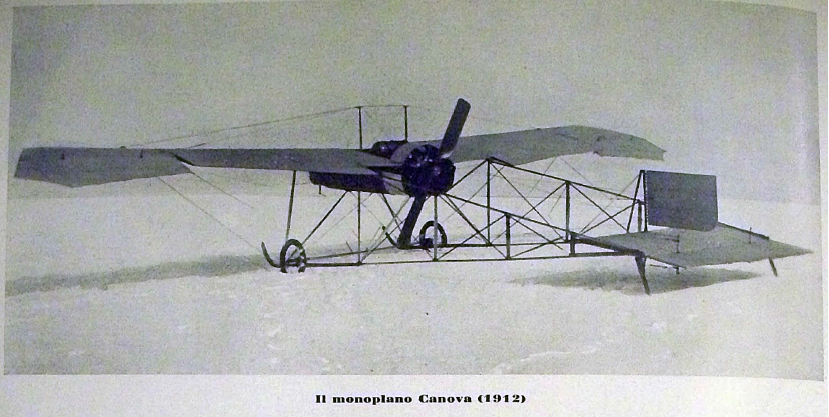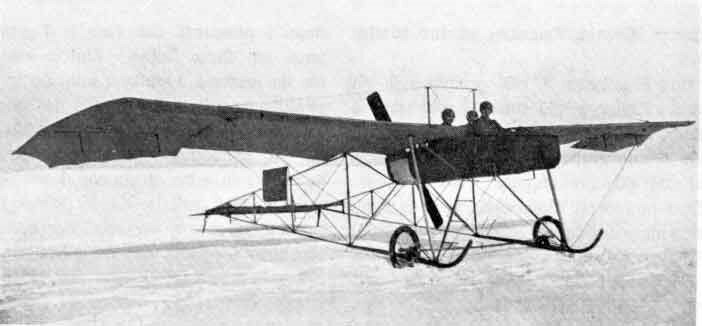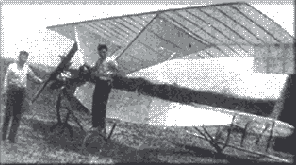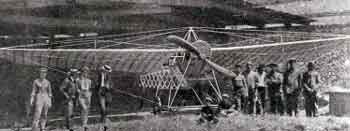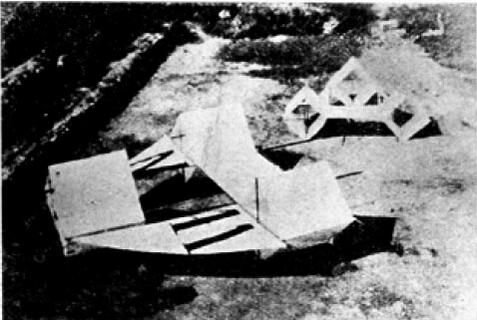You are using an out of date browser. It may not display this or other websites correctly.
You should upgrade or use an alternative browser.
You should upgrade or use an alternative browser.
Italian Early Aircraft 1909-1920
- Joined
- 25 July 2007
- Messages
- 3,874
- Reaction score
- 3,184
As, the name suggests, AVIS (Atelier Voisin Italie Septentrionale) at Cameri (NE of Torino) was set up to build Les Frères Voisin biplanes under licence. AVIS (or 'AVIS-Voisin') was established in 1909 by Alessandro Cagno, Clovis Thouvenot, and Gino Galli. By the way, the company name (in French) translates into something like 'Northern Italy Voisin Workshop'.
AVIS was short-lived. (Alessandro Cagno came back from the war in Libya disillusioned with aviation and he soon returned to auto and motorboat racing.) AFAIK, the 1909 AVIS firm only built five aircraft. These were:
1909: A Henry Farman biplane; a Voisin-Farman biplane; and a Voisin type Paris-Bordeaux (aka AVIS-Pasotti); and
1910: The AVIS 4 Cagno and the AVIS 5 Serra Zanetti (both variations on the Voisin-Farman theme).
Note that AVIS 4 and AVIS 5 were airframe numbers, not designations. Following Gabriel Voisin's practice, the aircraft were named for their owners - Alessandro Cagno and Giuseppe Serra Zanetti. The Serra Zanetti aircraft was Isotta-Fraschini powered (no details on the others).
The 'AVIS-Pasotti" I am less sure about. The fratelli Pasotti built Voisins. So, does that name mean that the AVIS 3 (?) was built for one of the Pasottis? Or does it mean that the machine was of modified type to a fratelli Pasotti formula? I don't know ...
AVIS was short-lived. (Alessandro Cagno came back from the war in Libya disillusioned with aviation and he soon returned to auto and motorboat racing.) AFAIK, the 1909 AVIS firm only built five aircraft. These were:
1909: A Henry Farman biplane; a Voisin-Farman biplane; and a Voisin type Paris-Bordeaux (aka AVIS-Pasotti); and
1910: The AVIS 4 Cagno and the AVIS 5 Serra Zanetti (both variations on the Voisin-Farman theme).
Note that AVIS 4 and AVIS 5 were airframe numbers, not designations. Following Gabriel Voisin's practice, the aircraft were named for their owners - Alessandro Cagno and Giuseppe Serra Zanetti. The Serra Zanetti aircraft was Isotta-Fraschini powered (no details on the others).
The 'AVIS-Pasotti" I am less sure about. The fratelli Pasotti built Voisins. So, does that name mean that the AVIS 3 (?) was built for one of the Pasottis? Or does it mean that the machine was of modified type to a fratelli Pasotti formula? I don't know ...
- Joined
- 25 July 2007
- Messages
- 3,874
- Reaction score
- 3,184
Thank you very much Apophenia,and are they a military aircraft ?.
Also can I ask about Elicoplano Moncher of 1910 ?.
Not military aircraft. The AVIS types were built for civilian customers (again, following Gabriel Voisin's practice).
Of course, Alessandro Cagno joined the fight in Libya. (There, he invented a bomb-aiming device but his aerial activities were overshadowed by tenente Giulio Gavotti.) I guess the question is: Did Cagno volunteer his AVIS 4 for Libya as well? Try searching the air war during the 1911-1912 Italo-Ottoman War and you may find the answer.
For that first elicoplano, you would need to search for Guido Moncher (and his 'Elodie'?).
- Joined
- 26 May 2006
- Messages
- 32,695
- Reaction score
- 11,952
For that first elicoplano, you would need to search for Guido Moncher (and his 'Elodie'?).
Here is it,but I can't translate it;
Guido Moncher il documentario
"Guido Moncher da Coredo: il volo di una vita. La straordinaria storia umana dell'inventore dell'elicoplano." di Mauro Vittorio QUATTRINA
Attachments
- Joined
- 26 May 2006
- Messages
- 32,695
- Reaction score
- 11,952
Hi,
The 1910 Monoplano, designed by Ing. Omero Bacchiega of Tortona (midway between Genova and Milano), was constructed of beech and bamboo with metal rods for added strength. It was fitted with a 25 hp Anzani engine, driving a 2 meter diameter propeller.
The 1910 Monoplano, designed by Ing. Omero Bacchiega of Tortona (midway between Genova and Milano), was constructed of beech and bamboo with metal rods for added strength. It was fitted with a 25 hp Anzani engine, driving a 2 meter diameter propeller.
Attachments
- Joined
- 26 May 2006
- Messages
- 32,695
- Reaction score
- 11,952
For that first elicoplano, you would need to search for Guido Moncher (and his 'Elodie'?).
Here is it,but I can't translate it;
Guido Moncher il documentario
"Guido Moncher da Coredo: il volo di una vita. La straordinaria storia umana dell'inventore dell'elicoplano." di Mauro Vittorio QUATTRINAguidomoncherildocumentario.jimdofree.com
That means it was a military aircraft as in article ?
Attachments
- Joined
- 25 July 2007
- Messages
- 3,874
- Reaction score
- 3,184
That means it was a military aircraft as in article ?
I didn't see any mention in the article of it being intended for the military. What was the quote?
- Joined
- 25 July 2007
- Messages
- 3,874
- Reaction score
- 3,184
What about Bortolotti biplane of 1910 ?.
Roberto Bortolotti - a Torinese amateur builder - designed and built "un minuscolo aereo" with fellow amateur Maurizio Ramassotto. The tiny machine flew from Piazza d'Armi in Torino on 27 May 1910.
This ultra-light aircraft (weighing only 120 kg) reached 10 metres on the power of its air-cooled two-cylinder engine. Output for that engine was between 16 an 18 hp.
- Joined
- 25 July 2007
- Messages
- 3,874
- Reaction score
- 3,184
and what about Betteo Caravaggio biplane of 1910 ?.
From: Breguet's Pre-1914 Aircraft ID Challenge
"Betteo-Caravaggio biplane (Italy, 1910)
This machine was owned by M. Betteo and built by A. Caravaggio, who also provided the four-cylinder air-cooled "semi-radial" engine, which was placed immediately in front of the pilot and drove the propeller via a long shaft. The tail surfaces were fixed, but the incidence of the wings could by changed by 35 degrees by a patented mechanism, thereby achieving pitch control. The plane made some short flights at an altitude of 3-4 m in late 1910, in Pallanza on the shores of Lago Maggiore in northern Italy."
So, a tractor, 2-bay biplane with an 'open' fuselage and a fixed, cruciform tailplane. No other details. (Unfortunately, Google makes it all but pointless trying online searches for "A. Caravaggio".)
-- http://thefirstairraces.net/stuff/breguet/images/694a.jpg
- Joined
- 31 July 2013
- Messages
- 546
- Reaction score
- 1,074
Not sure of any military connection. The Canova 1912 Monoplane featured a pusher arrangement, with accommodation for three persons in the pod fuselage in front of the engine. It featured a single fin rudder with ailerons fitted. Another pic from http://all-aero.com/index.php/126-planes-c/21207-canova-1912-areoplano
Attachments
- Joined
- 25 July 2007
- Messages
- 3,874
- Reaction score
- 3,184
and for Canova,was this a military aircraft of 1912 ?.
A military connection is quite possible. In Libya, the Battaglione Aviatori possessed "1 monoplano costruito nelle officine di Somma Lombardo dall'ingegniere Flaminio Piana Canova".
-- http://www.aquile-italiane.it/Battaglione Aviatori.html
So, a monoplane to Flaminio Piana Canova's design was built at workshops in Somma Lombardo and sent to Libya with the Battaglione Aviatori. But was this the aircraft in your image? Who knows?
- Joined
- 26 May 2006
- Messages
- 32,695
- Reaction score
- 11,952
Thank you dear Apophenia,
and about Antonio Chiribiri,for his two aircraft,I ask if there was one of them
for military use or not ?.
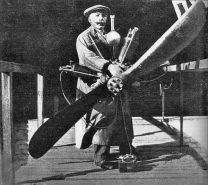
 it.wikipedia.org
it.wikipedia.org
and about Antonio Chiribiri,for his two aircraft,I ask if there was one of them
for military use or not ?.

Antonio Chiribiri - Wikipedia
- Joined
- 25 July 2007
- Messages
- 3,874
- Reaction score
- 3,184
and about Antonio Chiribiri,for his two aircraft,I ask if there was one of them for military use or not ?.
Antonio Chiribiri produced at least five airframes (to four related designs). But that is not counting a 1908 Achille Bertelli helicopter design (which Chiribiri was invited to collaborate on after joining Brixia-Züst) or a 1910 ornitottero designed with Franz Miller.
Chiribiri also designed a multi-engined aircraft c.1928 under the auspices of SA ABC (Società Anonima Automobili Brevetti Chiribiri) although his real interest here seems to have been in the design of the aero-engines themselves. Nothing came of this. (Anyone have any details on this ABC concept?)
In September 1911, Fabbrica Torinese Velivoli Chiribiri & C. was founded by Antonio Chiribiri with partner Maurizio Ramassotto and a notary named Baricco. Ing. Gaudenzio Verga was also involved (although perhaps not as a controlling shareholder) as was pilot Guido Paolucci. Presumably, Paolucci acted as a test-pilot (a role he soon played with Gabardini) but he may also been involved in the flying school set up by Chiribiri and Ramassotto at Mirafiori.
Built Chiribiri Aircraft Designs
Chiribiri 1 : 1911 Blériot type, 1 x 40 hp Chiribiri water-cooled 4-cylinder inline
-- Flown by Antonio Chiribiri at Torino's Piazza d'Armi, 09 March 1911, crashed on landing
Chiribiri 2 : 1912 Blériot type, 2-seat tandem, 1 x 50 hp Chiribiri 4-cylinder
-- 1st flown by Maurizio Ramassotto* from Mirafiori aerodrome
Chiribiri 3 : 1911-12 Blériot type, 3-seater, 1 x 80-to-100 hp Chiribiri engine
-- Refined, more powerful derivative of Chiribiri 2 prototype, x 2
Chiribiri 5: 1913 Blériot type, 2-seater (side-by-side), 1 x (??)
-- Chiribiri n.5 was 1st to fly from Italian mainland to Sardinia
Both Chiribiri 3 aircraft were loaned to the Aero Club d'Italia's Comitato Pro Flotta Aerea - an organization dedicated to popularizing aviation in Italy. The Chiribiri 3s were demonstrated for potential military service but foreign types were preferred. In 1913, the Chiribiri n.3 went to Ecuador as 'Patria nº 1'.
The Chiribiri 5 was designed specifically to appeal to the Aviazione Militare as a trainer (Chiribiri also running a flying school at Mirafiori which was well-frequented by military officers). Alas, the Aviazione Militare wasn't interested in the Chiribiri 5. By then, Ramassotto had withdrawn as test pilot (being a new father at the time).
In 1914, Chiribiri quit aviation to focus on automotive designs. During WWI, the Chiribiri workshops were judged underutilized and they were assigned license production of French Le Rhône rotary engines for the Italian military.
- Joined
- 25 July 2007
- Messages
- 3,874
- Reaction score
- 3,184
Does anyone know more about this De Simone parasol wing monoplane of 1913 ?.
Most online references to Armando de Simone's 1913 parasol seem to originate with a brief mention in Un secolo del settore aeronautico campano: una storia poco conosciuta by Sergio Mazzarella (Denaro Libri srl, Naples, 2011). All that is mentioned is that the machine was this was the second aircraft built in Campania. When completed at the Neapolitan workshops of Carrano e Corazzo was "volare nella 'Real Tenuta' di Licola".
Okay ... but not quite.
An older source - Ad Astra: Pionieri napoletani del volo by Guido Maisto (F. Capone, Naples, 1948) - confirms that the de Simone parasol was built at Carrano e Corazzo workshops - assisted by "Lopez" (whoever that might have been). Construction took place between October 1912 and May 1913. Upon completion, the parasol was moved (not flown) to Licola (18 km west of Naples proper).
Test flights were made from the grounds of the Real Tenuta (Royal Estate) in Licola during June and July of 1913. Author Guido Maisto claims that he personally participated in some earlier (ground?) testing in April-May. [1] If so, this suggests that construction was completed earlier than suggested above.
The only details I've found about the parasol itself are a cost of 3,500 lire (complete with imported 30-35 hp Anzani 3-cylinder fan radial engine). Testing was cut short when Armando de Simone was called up for military service.
_______________________________
[1] Note: Maisto was merely an enthusiast but that was a time for amateurs (in the positive sense). By profession, Guido Maisto was lawyer but he would also become the editor of L'Aviazione magazine (1918-1932).
- Joined
- 26 May 2006
- Messages
- 32,695
- Reaction score
- 11,952
Many thanks dear Apophenia,
and here is Gallo monoplane Gabbiano,
A design of Count Muzio Gallo, construction of the machine was started in spring 1911 but work was still not finished in October of 1912 for some reason. Unfortunately the monoplane – christened Gabbiano (Seagull) – was completely destroyed by fire on October 24, 1912. The engine fitted developed 40 hp.
and here is Gallo monoplane Gabbiano,
A design of Count Muzio Gallo, construction of the machine was started in spring 1911 but work was still not finished in October of 1912 for some reason. Unfortunately the monoplane – christened Gabbiano (Seagull) – was completely destroyed by fire on October 24, 1912. The engine fitted developed 40 hp.
Attachments
- Joined
- 25 July 2007
- Messages
- 3,874
- Reaction score
- 3,184
That's a tricky one. The existence of the Istituto Muzio Gallo makes online searching for details about the conte Muzio Gallo of Osimo (or his 1912 Gabbiano) quite difficult.
The Gabbiano was Deperdussin inspired ... which suggests that the 40 hp engine in question might have been an older Clerget (or his earlier Clément-Bayard) 4-cylinder water-cooled inline.
I did also note that the conte owned the hangar in which his aircraft burned ... but that's not really helpful, is it?
The Gabbiano was Deperdussin inspired ... which suggests that the 40 hp engine in question might have been an older Clerget (or his earlier Clément-Bayard) 4-cylinder water-cooled inline.
I did also note that the conte owned the hangar in which his aircraft burned ... but that's not really helpful, is it?
- Joined
- 25 July 2007
- Messages
- 3,874
- Reaction score
- 3,184
there was also Giordani-La Cava Cervo Volante ?.
Sorry, don't know a thing about it. (Although I can certainly see why it was named after the Stag Beetle!)
- Joined
- 26 May 2006
- Messages
- 32,695
- Reaction score
- 11,952
there was also Giordani-La Cava Cervo Volante ?.
Sorry, don't know a thing about it. (Although I can certainly see why it was named after the Stag Beetle!)
Here it's.
Attachments
- Joined
- 3 September 2006
- Messages
- 1,387
- Reaction score
- 1,216
Maybe not the way you think: In French, cerf-volant means "kite". The kind of toys that kids fly on a beach on windy days.Although I can certainly see why it was named after the Stag Beetle!
I suspect that in Italian "cervo volante" also means kite. Maybe a native speaker can confirm?
If so, it would dovetail with the fact that on the photo posted by Hesham, there is no apparent engine.
- Joined
- 3 September 2006
- Messages
- 1,387
- Reaction score
- 1,216
A very nice site giving lots of information about early Italian airplanes from 1877 to 1914, full of pictures. Very interesting:
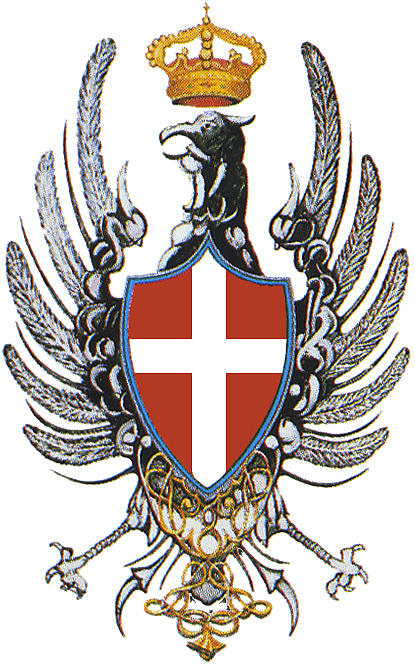
 modellismoitalia.altervista.org
modellismoitalia.altervista.org

Modellismo Italia | Aerei | Gli Aerei in Italia dal 1877 al 1915
Aerei in Italia dal 1877 al 1915 - Lista per nome ed anno degli aerei di costruzione italiana o straniera presenti in Italia dal 1877 al 1915.
 modellismoitalia.altervista.org
modellismoitalia.altervista.org
- Joined
- 26 May 2006
- Messages
- 32,695
- Reaction score
- 11,952
A very nice site giving lots of information about early Italian airplanes from 1877 to 1914, full of pictures. Very interesting:

Modellismo Italia | Aerei | Gli Aerei in Italia dal 1877 al 1915
Aerei in Italia dal 1877 al 1915 - Lista per nome ed anno degli aerei di costruzione italiana o straniera presenti in Italia dal 1877 al 1915.modellismoitalia.altervista.org
What is the military aircraft in this list ?.
It means: Guido Moncher's helicopter will be reconstructed by the Veronese artist Massimo Marchiori and made to "fly" to Coredo during the filming of a fiction about Moncher's life. Meanwhile, look at how he found a Niuport replica in 1/1 scale, made of cardboard. Obviously this Niuport had no filmic purposes so it lacks camouflage and other details that we will put, instead, in the model in scale almost 1: 1! Then both the plane and the tower will be donated to the Coredo Museum, which is dedicated to Moncher.For that first elicoplano, you would need to search for Guido Moncher (and his 'Elodie'?).
Here is it,but I can't translate it;
Guido Moncher il documentario
"Guido Moncher da Coredo: il volo di una vita. La straordinaria storia umana dell'inventore dell'elicoplano." di Mauro Vittorio QUATTRINAguidomoncherildocumentario.jimdofree.com
That means it was a military aircraft as in article ?
- Joined
- 26 May 2006
- Messages
- 32,695
- Reaction score
- 11,952
Thank you my dear Ermeio,
and I meant all aircraft in this list,what was the military from them ?,

 modellismoitalia.altervista.org
modellismoitalia.altervista.org
and I meant all aircraft in this list,what was the military from them ?,

Modellismo Italia | Aerei | Gli Aerei in Italia dal 1877 al 1915
Aerei in Italia dal 1877 al 1915 - Lista per nome ed anno degli aerei di costruzione italiana o straniera presenti in Italia dal 1877 al 1915.
 modellismoitalia.altervista.org
modellismoitalia.altervista.org
Dear Hesham, actually all those marked with "Regio Esercito" and "Regia Marina" are military aircraft.
Regio Esercito was Royal Army, while Regia Marina was Royal Navy.
19 – Etrich Taube – 1909 – Regio Esercito
 Etrich Taube – 1909 – Regio Esercito
Etrich Taube – 1909 – Regio Esercito
23 – Maurice Farman MF.7 – 1909 – Regio Esercito
 Maurice Farman MF.7 – 1909 – Regio Esercito
Maurice Farman MF.7 – 1909 – Regio Esercito
25 – Nieuport IV G – 1909 – Regio Esercito
 Nieuport IV G – 1909 – Regio Esercito
Nieuport IV G – 1909 – Regio Esercito
41 – Biplano Savary – 1910 – Regio Esercito
 Biplano Savary – 1910 – Regio Esercito
Biplano Savary – 1910 – Regio Esercito
54 – Wright Model A/Rebus – 1910 – Regio Esercito (First italian military aircraft)
 Wright Model A/Rebus – 1910 – Regio Esercito
Wright Model A/Rebus – 1910 – Regio Esercito
66 – Albatros Doppeltaube – 1911 – Regio Esercito
 Albatros Doppeltaube – 1911 – Regio Esercito
Albatros Doppeltaube – 1911 – Regio Esercito
67 – Asteria N.3 – 1911 – Regio Esercito
 Asteria N.3 – 1911 – Regio Esercito
Asteria N.3 – 1911 – Regio Esercito
79 – Monoplano Bristol-Coanda – 1911 – Regio Esercito
 Monoplano Bristol-Coanda – 1911 – Regio Esercito
Monoplano Bristol-Coanda – 1911 – Regio Esercito
80 – Monoplano Deperdussin – 1911 – Regio Esercito
 Monoplano Deperdussin – 1911 – Regio Esercito
Monoplano Deperdussin – 1911 – Regio Esercito
87 – Borel Idro – 1912 – Regia Marina
 Borel Idro – 1912 – R
Borel Idro – 1912 – R
95 – Caproni Ca.18 – 1912 – Regio Esercito
 Caproni Ca.18 – 1912 – Regio Esercito
Caproni Ca.18 – 1912 – Regio Esercito
96 – Curtiss Model F – 1912 – Regia Marina
 Curtiss Model F – 1912 – Regia Marina
Curtiss Model F – 1912 – Regia Marina
97 – Farman MF.6 – 1912 – Regio Esercito
 Farman MF.6 – 1912 – Regio Esercito
Farman MF.6 – 1912 – Regio Esercito
98 – Farman MF.7 bis – 1912 – Regia Marina
 Farman MF.7 bis – 1912
Farman MF.7 bis – 1912
101 – Hanriot D.1 – 1912 – Regio Esercito
 Hanriot D.1 – 1912 – Regio Esercito
Hanriot D.1 – 1912 – Regio Esercito
I copy-pasted here some of them - I hope they are all the military types.
Anyway, the original link will provide the rest. https://modellismoitalia.altervista.org/modellismo/aerei/origini/aerei_in_italia_dal_1877_al_1915/
best regards
er me
Regio Esercito was Royal Army, while Regia Marina was Royal Navy.
19 – Etrich Taube – 1909 – Regio Esercito
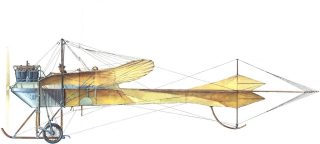 Etrich Taube – 1909 – Regio Esercito
Etrich Taube – 1909 – Regio Esercito23 – Maurice Farman MF.7 – 1909 – Regio Esercito
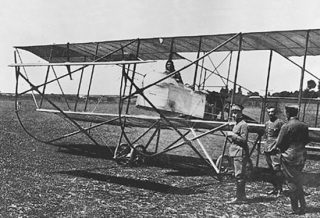 Maurice Farman MF.7 – 1909 – Regio Esercito
Maurice Farman MF.7 – 1909 – Regio Esercito25 – Nieuport IV G – 1909 – Regio Esercito
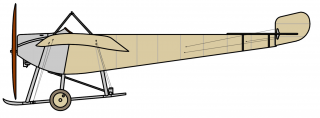 Nieuport IV G – 1909 – Regio Esercito
Nieuport IV G – 1909 – Regio Esercito41 – Biplano Savary – 1910 – Regio Esercito
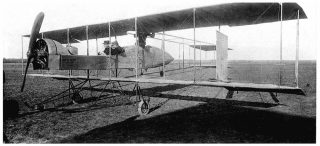 Biplano Savary – 1910 – Regio Esercito
Biplano Savary – 1910 – Regio Esercito54 – Wright Model A/Rebus – 1910 – Regio Esercito (First italian military aircraft)
 Wright Model A/Rebus – 1910 – Regio Esercito
Wright Model A/Rebus – 1910 – Regio Esercito66 – Albatros Doppeltaube – 1911 – Regio Esercito
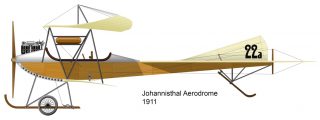 Albatros Doppeltaube – 1911 – Regio Esercito
Albatros Doppeltaube – 1911 – Regio Esercito67 – Asteria N.3 – 1911 – Regio Esercito
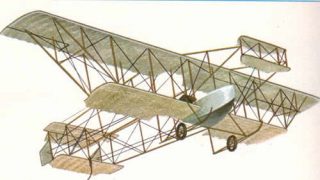 Asteria N.3 – 1911 – Regio Esercito
Asteria N.3 – 1911 – Regio Esercito79 – Monoplano Bristol-Coanda – 1911 – Regio Esercito
 Monoplano Bristol-Coanda – 1911 – Regio Esercito
Monoplano Bristol-Coanda – 1911 – Regio Esercito80 – Monoplano Deperdussin – 1911 – Regio Esercito
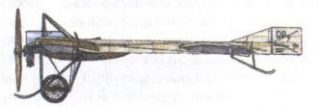 Monoplano Deperdussin – 1911 – Regio Esercito
Monoplano Deperdussin – 1911 – Regio Esercito87 – Borel Idro – 1912 – Regia Marina
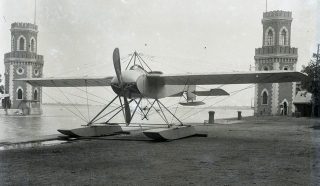 Borel Idro – 1912 – R
Borel Idro – 1912 – R95 – Caproni Ca.18 – 1912 – Regio Esercito
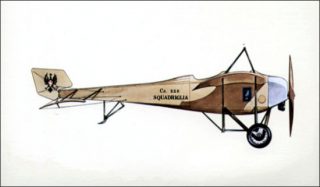 Caproni Ca.18 – 1912 – Regio Esercito
Caproni Ca.18 – 1912 – Regio Esercito96 – Curtiss Model F – 1912 – Regia Marina
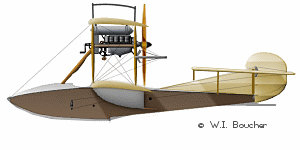 Curtiss Model F – 1912 – Regia Marina
Curtiss Model F – 1912 – Regia Marina97 – Farman MF.6 – 1912 – Regio Esercito
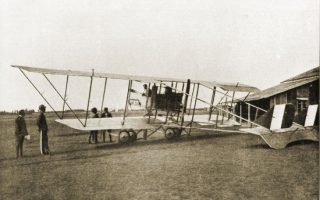 Farman MF.6 – 1912 – Regio Esercito
Farman MF.6 – 1912 – Regio Esercito98 – Farman MF.7 bis – 1912 – Regia Marina
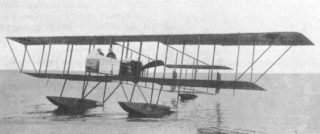 Farman MF.7 bis – 1912
Farman MF.7 bis – 1912101 – Hanriot D.1 – 1912 – Regio Esercito
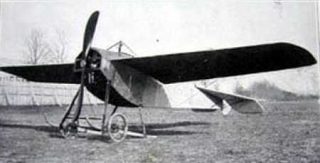 Hanriot D.1 – 1912 – Regio Esercito
Hanriot D.1 – 1912 – Regio EsercitoI copy-pasted here some of them - I hope they are all the military types.
Anyway, the original link will provide the rest. https://modellismoitalia.altervista.org/modellismo/aerei/origini/aerei_in_italia_dal_1877_al_1915/
best regards
er me
Similar threads
-
-
Guidoni Early Aircraft and his Activities
- Started by hesham
- Replies: 6
-
Ricci Bros Projects: between the aerial motorcycle and the flying transatlantic
- Started by ermeio
- Replies: 45
-
-

